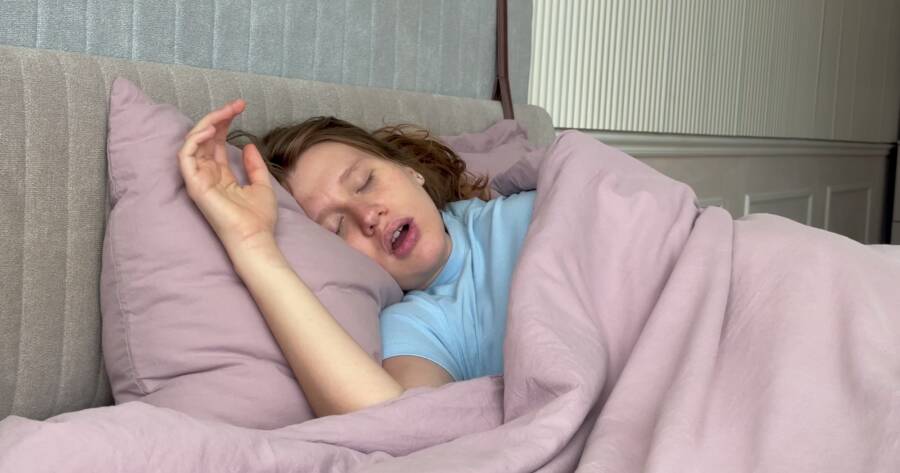Sleep apnea is a common but potentially serious sleep disorder characterized by repeated interruptions in breathing during sleep. These pauses, known as apneas, can last from a few seconds to several minutes and may occur 5 to 30 times or more per hour. As a result, sleep quality is significantly reduced, leading to daytime sleepiness and other health complications.
Types of Sleep Apnea
There are two main types of sleep apnea: obstructive sleep apnea (OSA) and central sleep apnea (CSA). OSA, the more common form, occurs when the throat muscles relax excessively during sleep, narrowing or blocking the airway. This obstruction causes loud snoring and forces the brain to partially wake the person to reopen the airway. CSA, on the other hand, happens when the brain fails to send proper signals to the muscles that control breathing.
Common symptoms of sleep apnea include:1
- Loud snoring
- Gasping or choking during sleep
- Excessive daytime sleepiness
- Morning headaches
- Difficulty concentrating
- Irritability or mood changes
Risk Factors and Complications
Risk factors for developing sleep apnea include obesity, age (being older), male gender, family history, and certain anatomical features like a thick neck or narrow airway.2
If left untreated, sleep apnea can lead to serious health complications such as:
- Cardiovascular problems (hypertension, heart disease, stroke)
- Type 2 diabetes
- Liver problems
- Metabolic syndrome
- Complications with medications and surgery
Diagnosing Sleep Apnea
Diagnosing sleep apnea typically involves a comprehensive evaluation by a healthcare provider. The process usually begins with a review of symptoms, medical history, and a physical examination. If sleep apnea is suspected, the primary diagnostic tool is a sleep study, also known as polysomnography. This test can be conducted in a sleep lab or, in some cases, at home using portable monitoring devices.
During the study, various bodily functions are monitored, including brain activity, eye movements, heart rate, blood oxygen levels, and breathing patterns. The results of the sleep study, combined with the patient’s symptoms and medical history, allow doctors to diagnose sleep apnea and determine its severity.
Treatment Options
Treatment for sleep apnea varies depending on the type and severity of the condition. For milder cases, lifestyle changes such as weight loss, avoiding alcohol, or changing sleep positions may be recommended. However, the most common and effective treatment for moderate to severe obstructive sleep apnea is continuous positive airway pressure (CPAP) therapy. This involves wearing a mask connected to a machine that delivers pressurized air to keep the airway open during sleep.
Other treatment options may include oral appliances, which reposition the jaw and tongue to keep the airway open, or in some cases, surgery to remove excess tissue or correct structural abnormalities. For central sleep apnea, treatment may focus on addressing underlying medical conditions or using adaptive servo-ventilation devices
Talk To Your Doctor Today
It’s crucial for individuals experiencing symptoms of sleep apnea to consult a healthcare provider for proper diagnosis and treatment. With appropriate management, many people with sleep apnea can significantly improve their sleep quality and overall health.
